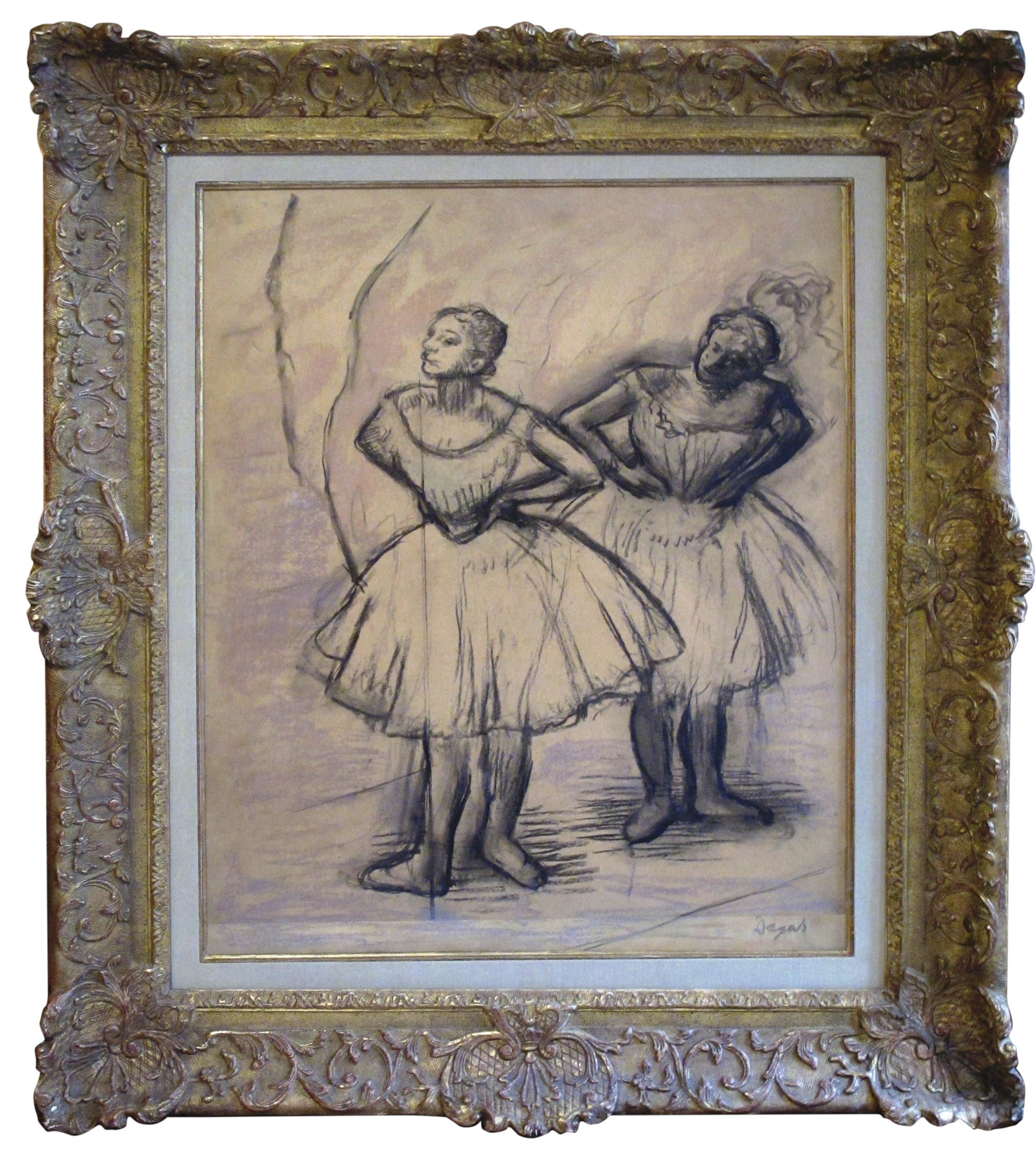Edgar Degas
b. 1834, Paris
d. 1917, Paris
Two Dancers
c. 1890
Charcoal and pastel on joined paper laid down on card
71.1 x 55.9 cm (28 x 22 in.)
Provenance
Galerie Beyeler, Basel,
Private Collection, USA,
Private Collection, Denmark.
Literature
P. Brame and T. Reff, Degas et son oeuvre: a supplement, New York & London, 1984, no. 132, illustrated.
This is a study for the pastel, Danseuses dans les coulisses. (P. A. Lemoisne, Degas et son oeuvre, vol. 3, Paris, 1946, p.590, III. 1015)
Description
Degas' fascination with the world of the ballet began in the 1860s but the work from his later career is distinguished by his move from producing single portrayals of a chosen subject towards creating a 'series' of works based on a similar composition. The present drawing is one of such a series, which concentrates on the central ballerina with hands on hips. Degas's use of colour, the arrangement of dancers and the detail of the surrounding stage décor are variations he explored within this series. The dancers' keen anticipation is suggested in the most concise manner; the tilted head of the foremost ballerina, and the dancer behind her, leaning forwards as if waiting for their cue, evoke the excitement and energy of the wings during a performance. The present drawing is a study for the pastel Danseuses dans les coulisses (P. A. Lesmoisne, Degas et son oeuvre, vol. 3, no. 1015).
The dancers in the present work closely resemble those in the pastel Deux danseuses, 1893-8, illustrated in the exhibition catalogue Degas, Beyond lmpressionism, National Gallery, London, 1996, no. 77. This drawing is also remarkable in that it bears the artist's signature. Degas did not often sign his later works, which could denote he felt this work was finished and could be released as a public work of art. Eight pastels focusing on this composition are also signed so one could conjecture that Degas wished to present these works as a finished group, perhaps having been inspired by his contemporary Monet who had recently exhibited several 'series' of works at Durand-Ruel's gallery.
The authenticity of this work has been confirmed by Sylvie Brame and Francois Lorenceau, Galerie Brame & Lorenceau.




